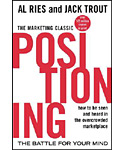Regardless of industry, you’re in the business of getting and keeping customers. And whether you’re selling goods or services, there is no better path to the hearts and minds of your customers than with an effective brand. No question, a successful brand is the most powerful marketing tool you can have.
Doug Rose, presently VP of Merchandising Brand Development at QVC, provided his branding expertise for this Antiphony Insights. In addition to sharing his thoughts, he provides us with a branding model you can use to begin thinking about your own brand promises.
We’re always interested in your comments and suggestions. Let us know how you liked this issue by sending your feedback to insights@antiphony.com.
Creating the Brand Promise
 Doug Rose is the VP of Merchandising Brand Development at QVC, Inc., the $4.3B e-commerce leader that each week introduces over 250 new products and each month adds over 194,000 customers. Doug is responsible for introducing new brands and for creating strategic alliances with other retail and media entities. Previously, he enjoyed a successful 12-year advertising career at Ketchum Advertising, Young & Rubicam, and Hal Riney & Partners. He’s been a guest lecturer at Harvard and Stanford Business Schools.
Doug Rose is the VP of Merchandising Brand Development at QVC, Inc., the $4.3B e-commerce leader that each week introduces over 250 new products and each month adds over 194,000 customers. Doug is responsible for introducing new brands and for creating strategic alliances with other retail and media entities. Previously, he enjoyed a successful 12-year advertising career at Ketchum Advertising, Young & Rubicam, and Hal Riney & Partners. He’s been a guest lecturer at Harvard and Stanford Business Schools.
Al Ries, marketing icon and author, says in his book The 22 Immutable Laws of Branding, “A Brand is nothing more than a word . . . a proper noun . . . that influences purchasing behavior.” In my experience, a brand is that and more. It’s the name, it’s an image, it’s the sum of corporate image, including words, sounds, smells, pictures, even feelings – anyone or anything that embodies a company’s image.
Think Apple Computer. AT&T. Target. Martha Stewart. MasterCard or Visa. How would you describe any of these? Any number of examples can illustrate the point that brand goes well beyond a word. And their effectiveness is directly tied to how well they’ve defined and portrayed their brand.
Because we offer hundreds of national and proprietary brands, positioning is an important discipline at QVC. To streamline the process, we use a simple worksheet to help us define what makes each brand unique. We’ve borrowed liberally from many sources and similar examples to create a simple, very useful model. And while a lot of thought goes into defining each brand, the result is a simple, straightforward sentence called a “brand promise.”
Branding exercises can be very useful, and you can use this same model to create your own brand promise. Before you start, you should have a clear understanding of your customers and target market.
Start at the bottom of your page.
- Start with the Product or Service you offer and want to brand.
- Moving up the worksheet, next define the Physical Features or Attributes, the tangible aspects of your products. What are the qualities of the products you’re selling?
- Next, what are the Rational Benefits of the products or services? These are typically fact-based benefits based on the features of your products.
- Working up the chart, define the Emotional Benefits – where do the rational benefits lead in terms of intangible or emotional benefits for consumers?
- In your next section, Consumer Motivation, define what will motivate a consumer to purchase your products or services.
- And finally, at the top, create a concise, one-sentence description of your Brand Promise, a sentence that encapsulates your worksheet.
Of course, this will take some thought to complete, and you might want to use the tool with others in your business and make this a collaborative effort.
Success in marketing is directly linked to clarity of message and the resonance of that message with the customer. Defining your brand promise is a useful first step in solidifying your brand and your message.
Revenue-Generating Relationships
Jeffrey Babin, Antiphony
jbabin@antiphony.com
Growing revenue while shrinking customer acquisition costs is the most critical challenge facing technology businesses.
Well-structured and executed Revenue Generating Relationships can dramatically improve financial performance. Many of our Relaunch engagements have helped clients explore and secure customers, channels, or partners that have not previously been considered, including:
- Direct sale
- OEM
- Licensing
- Value Added Reselling
- Distributor
- Independent Representative
- Joint sale
- Bundling
- Direct marketing
Candidates for these relationships offer complementary or required products/services to build a whole product, increasing the perceived value of your offering.
Rapid scaling of revenue and reduced customer acquisition costs from these relationships can have dramatic effects on company performance and more than offset potential reduced gross margins.
To learn more about Revenue-Generating Relationships, contact us at insights@antiphony.com.
Recommended Reading
 Positioning: The Battle for Your Mind
Positioning: The Battle for Your Mind
Al Ries and Jack Trout (ISBN: 0071373586)
This classic, which was recently reissued in December 2000, is still required reading for anyone in marketing and anyone interested in positioning a product or company.
